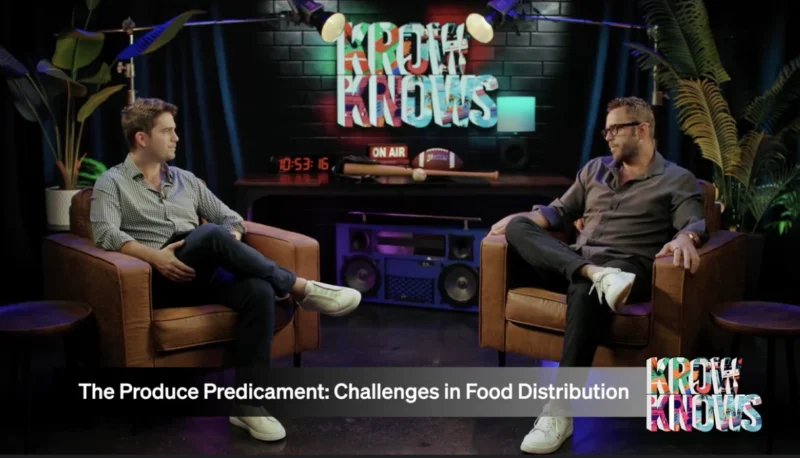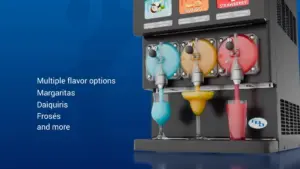New products hit store shelves each day, with up to 21,000 new food and beverage products released in a year. That doesn’t account for the new package sizes and packaging designs that brands develop and launch to keep up with ever-evolving consumer demand. As the marketing and development continue to innovate and tailor products to the liking of consumers, the production side quickly is handed a new puzzle to solve. Adding product sizes and formats translates into shorter production runs, and the inevitable result is more frequent changeovers, including secondary packaging. Adding changeovers without losing line efficiency (and money) is easier said than done.
While a mainline brand has the product volume to keep changeovers to a minimum, small- to medium-sized brands may be forced to accommodate two, three or even more changeovers in a single shift. Whether the line switches to a smaller bottle for a variety pack or from boxes to pouches, achieving a rapid and accurate changeover is essential. “Compared to 20 years ago, food and beverage manufacturers are under greater pressure to maintain a certain level of speed and agility to hold down their per-unit costs,” says Derek Bolland, Director of Engineering at Douglas. “New products go to market almost monthly for some companies,” Bolland says. “That’s why gaining the ability to adapt to these changeovers in their secondary packaging line is appealing and a must.”
Let’s take a look at some of the biggest barriers to recovering efficiencies lost to changeovers on the secondary packaging line, and how to remove them.
Parts and components add complexity to changeovers
 Older packaging equipment is not built or designed for fast, efficient changeovers. The simple reason is in years past, they weren’t needed. “Once they decided to go to market with some kind of product, the packaging would look the same for years,” Bolland says. “So that same piece of secondary packaging equipment would last for years. In an older-model case packer, one changeover can mean using 50 or more parts and many adjustments.” It’s easy to see how that adds time to the changeover process, along with opportunity for human error, which would lead to a line stoppage and the product waste that comes with it. “If one piece is off, the whole machine can’t run properly,” Bolland says. “And from there, it can take time to identify the needle in the haystack, to fix the problem and get the line running again.”
Older packaging equipment is not built or designed for fast, efficient changeovers. The simple reason is in years past, they weren’t needed. “Once they decided to go to market with some kind of product, the packaging would look the same for years,” Bolland says. “So that same piece of secondary packaging equipment would last for years. In an older-model case packer, one changeover can mean using 50 or more parts and many adjustments.” It’s easy to see how that adds time to the changeover process, along with opportunity for human error, which would lead to a line stoppage and the product waste that comes with it. “If one piece is off, the whole machine can’t run properly,” Bolland says. “And from there, it can take time to identify the needle in the haystack, to fix the problem and get the line running again.”
Design of your secondary packaging machine can simplify the parts and components, thus helping producers gain back some of that time lost to installing parts and recovering from faults. “One thing we try to do is reduce components needed for changeovers,” Bolland says. “We reduce the number of parts our customers need to physically take out and put back in. We group products and pack patterns that our customers run, and minimize the number of change parts while eliminating change parts and change points altogether wherever possible.”
Machine layout and orientation
Designing a production line is very much an art and a science, and it takes a careful analysis to ensure that you don’t inadvertently turn the production floor into a maze. Sometimes, Bolland sees just that when he visits manufacturing facilities. When it’s time to launch a changeover, it’s quite the production. The machinist is winding his way around this maze of conveyor belts, gathering tools and parts, maybe even climbing a ladder to access the section of the machine to reach the adjustment points. It leaves him wondering: How many extra steps are they taking just to swap components on a case packer?
For that reason, manufacturers are thinking about the real estate on the manufacturing floor when it’s time to add secondary packaging equipment, so they can conserve space and avoid the maze effect. “Thoughtful, compact machine design cuts back on the walking, which is actually an effective way to save time on changeovers,” Bolland says. “At Douglas,” he went on to say, “all access points are kept to one side of the machine, including adjustment points, operating screens, magazine holders and gluing systems for case packers.”
Achieving consistent repeatability
One metric of a successful changeover is repeatability; that is, how well do you replicate a successful machine task on the next run without wasting more time fiddling with the machine settings? A case packer with manual controls often requires fine tuning to get to that precise, problem-free handling of the product. One solution is developing processes and training personnel. But today, machine automation programs changeover settings into the machine controls. So even after several changeovers, the machine easily restores the old settings to pack the cases exactly as it did earlier. This is a significant area where automation increases line efficiency, and generates high ROI.
Shortage of skilled workers
 As illustrated earlier, an older case packing machine has many change parts and components, and requires a skilled machinist to complete the changeovers with speed and precision. However, food and beverage manufacturers face the ongoing issue of hiring and keeping experienced operators. Newer case packers are designed with fewer parts, controlled by easy-to-use, easy-to-learn human-machine interface (HMI). In the end, you need fewer hands and less experience to complete a changeover on secondary packaging equipment. This means even a novice can operate the machine, so machinists can focus on more complex tasks and other critical needs on the production floor. [Learn more about What manufacturers can do about the growing workforce skills gap]
As illustrated earlier, an older case packing machine has many change parts and components, and requires a skilled machinist to complete the changeovers with speed and precision. However, food and beverage manufacturers face the ongoing issue of hiring and keeping experienced operators. Newer case packers are designed with fewer parts, controlled by easy-to-use, easy-to-learn human-machine interface (HMI). In the end, you need fewer hands and less experience to complete a changeover on secondary packaging equipment. This means even a novice can operate the machine, so machinists can focus on more complex tasks and other critical needs on the production floor. [Learn more about What manufacturers can do about the growing workforce skills gap]
Rapidly changing package sizes and formats
Changing packaging sizes and formats requires a top-to-bottom look at the entire production line, and secondary packaging is no exception. When brands launch a line that’s packaged in a handy single-serve pouch instead of the standard box, the manufacturer faces a choice: Get a change part so the case packer can grab the pouch or rely on manual labor to package the pouches for shipping. However, ordering a custom case packer to complete the job can take several months of lead time, not to mention the fact that success of any product is never guaranteed — where’s the ROI in that investment? That’s where food and beverage companies need flexibility in their secondary packaging line.
A modular approach in machine design would help manufacturers gain agility to accommodate new product launches. The modular approach is all about being built for flexibility, so as products and demands shift and evolve, the production line can be easily adapted to meet the production needs in less time. “At Douglas, once a food manufacturer purchases a case packer, they can order a prefabricated component when they need it,” Bolland says. “All they have to do is send the samples, and their Douglas associate can help them identify the right component so they can get that line up and running with a significant reduction in lead time.”
Modular design also means gaining the ability to easily connect secondary packaging machines — case erectors and sealers — so you can build the line you need for a specific production and change it as needed. The modular approach gives manufacturers the ability to change formats with less lead time, reduce overall new equipment costs, and lets CPG makers stay agile so they can be competitive in a razor-thin market. [Check out A Rundown of Flexible Packaging Solutions]
Waste caused by priming and cleaning
A changeover doesn’t simply add time to the process, it also adds a certain amount of waste. Stopping and priming are unavoidable effects, and when you calculate the volume of wasted product and materials in a year that results from these processes, it adds up to a lot of money on the table. One calculation that goes into adding any line is whether wasted products would offset the gains in timing. “However,” Bolland says, “something as simple as shortening conveyors can reduce the number of products needed for priming. This also reduces the number of products left behind on the line, saving time and effort on cleanup.” When there are more SKUs to make and pack up during a shift, quick changeovers are key to reducing manufacturing costs. Get in touch with a Douglas team member now to learn more about how our line of innovative secondary packaging solutions can be completely customized to your unique needs.
For the latest news, videos, and podcasts in the Food & Beverage Industry, be sure to subscribe to our industry publication.
Follow us on social media for the latest updates in B2B!
Twitter – @MarketScale
Facebook – facebook.com/marketscale
LinkedIn – linkedin.com/company/marketscale









